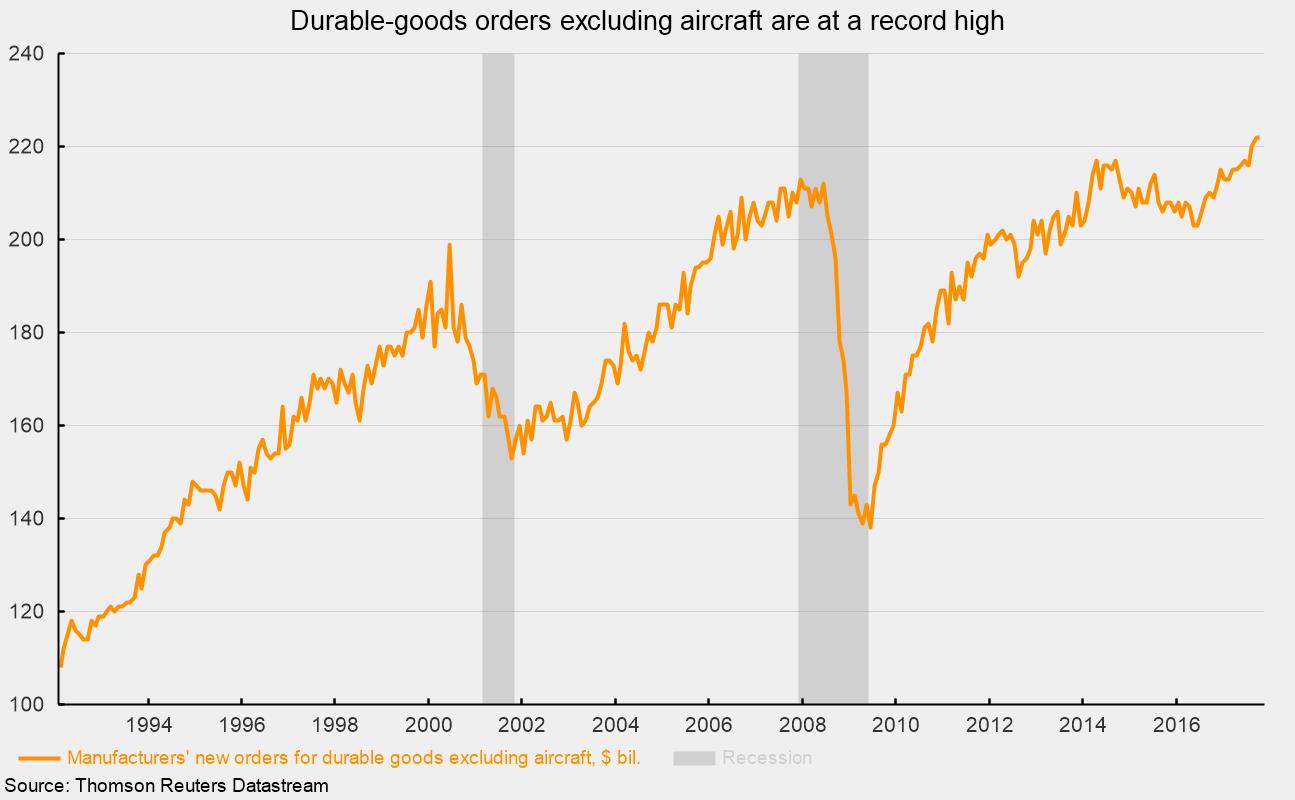More Good News on the Economy
On the day before Thanksgiving, a range of economic statistics from government and private sources show that the economy continues to have positive momentum heading into the year-end holiday-spending season. Data on consumer sentiment, the labor market and orders at the nation’s factories posted generally favorable results, suggesting continued economic growth with a low risk of recession in coming months.
Consumer-sentiment measures by the University of Michigan improved from the mid-month preliminary estimates, though the final November index is down slightly from the cycle peak in October. The overall Index of Consumer Sentiment came in at 98.5, 2.2 percent below the 13-year high of 100.7 in October. The November reading is still 5.0 percent above November 2016. For the two components, the Current Economic Conditions index registered a reading of 113.5, 2.6 percent below the 17-year high of 116.5 in October. The November result is still 5.8 percent above the level of a year ago. The Index of Consumer Expectations, one of the AIER leading indicators, came in at 88.9 for November, 1.8 percent below the prior month but 4.3 percent above the level of a year ago.
Initial claims for unemployment insurance totaled 239,000 in the most recent week, down from 252,000 in the prior week. Claims were heavily impacted by the hurricanes in late August and early September. Prior to the distortions, the six-month average for initial claims was about 242,000, slightly above the latest result. Continued signs of strength in other labor-market indicators combined with claims that have returned to their pre-hurricane levels suggest the labor market remains robust.
Finally, new orders for durable goods, items meant to last three years or more, at the nation’s factories fell 1.2 percent in October. However, the decline was driven by sharp drops in the volatile aircraft industry, with nondefense aircraft orders dropping 18.6 percent from the prior month while defense-aircraft orders fell 11.3 percent. Excluding aircraft orders, durable-goods orders were essentially unchanged from the prior month but were up 6.2 percent from a year ago. Year to date, durable-goods orders excluding aircraft are up 5.0 percent from the same period last year.
Among the categories tallied separately, five were up in the latest month while two, fabricated metals and transportation, were down. Within transportation, both defense and nondefense aircraft were down but motor vehicles orders were up in October. Only one category, defense aircraft, shows a decline for year-to-date 2017 versus the same period in 2016.
The one weak sign is the category of nondefense capital goods excluding aircraft. It posted a 0.5 percent drop in the latest month, but even that category has gained 4.4 percent year to date more than in the same period in 2016.
Overall, the latest data show favorable results for consumer sentiment, the labor market and manufacturers’ orders. They add to the mosaic of economic data suggesting a positive outlook for the economy in the coming months.



